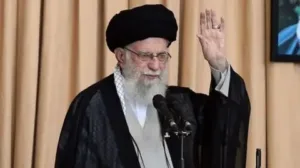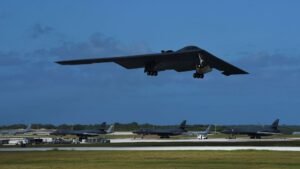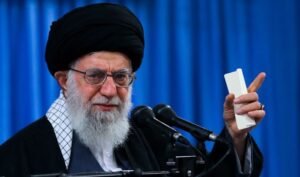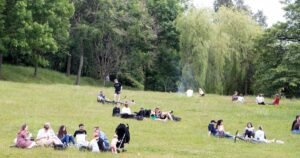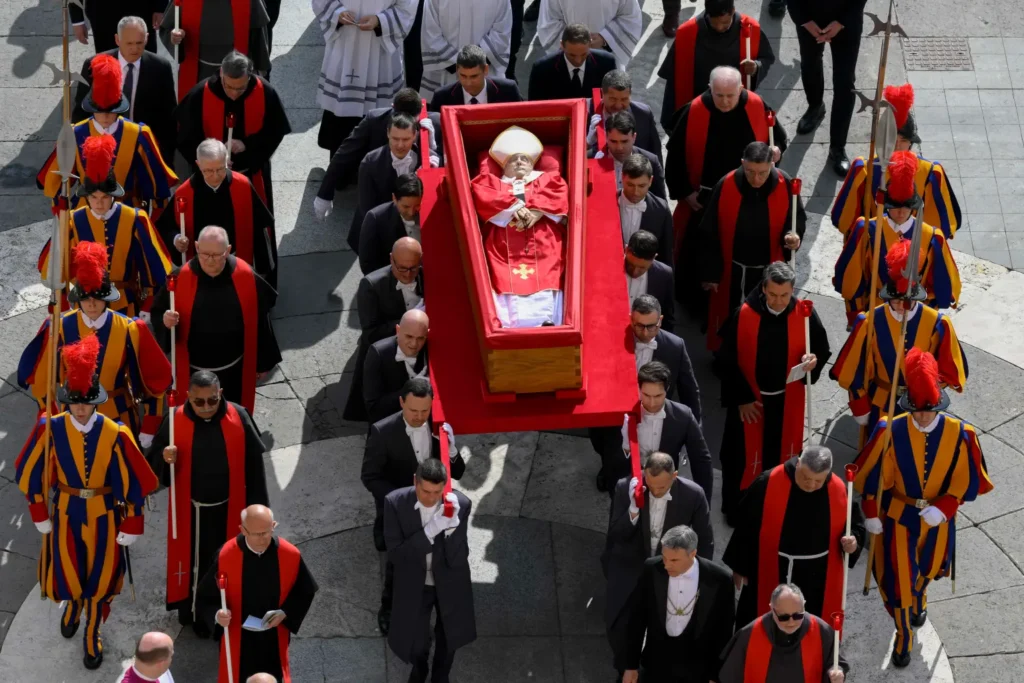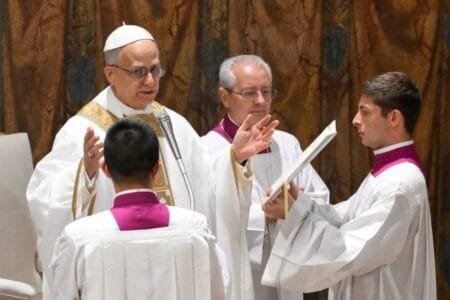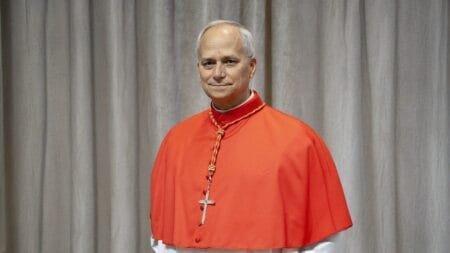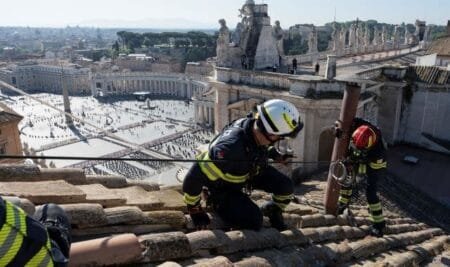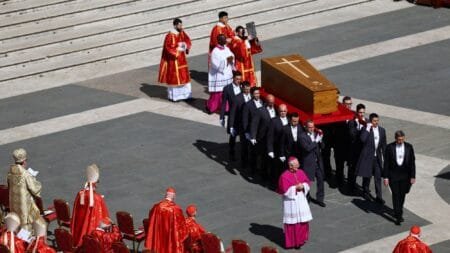VATICAN CITY — The bells of St. Peter’s Basilica rang solemnly on Wednesday as the body of Pope Francis was transferred from his residence at the Vatican’s Santa Marta guesthouse to the basilica, marking the beginning of three days of public mourning for the late pontiff.

A ceremonial procession of cardinals in scarlet robes and Swiss Guards in traditional blue and gold uniforms accompanied the simple wooden casket through the gates of Vatican City and across St. Peter’s Square.

The late Pope, who passed away on Monday at the age of 88 following a stroke, made his final public appearance on Easter Sunday, just days earlier, during a surprise popemobile ride.

Cardinal Kevin Farrell, currently overseeing Vatican affairs until a new pope is chosen, led the solemn march into the basilica, with the scent of incense wafting through the air and the church choir singing the Litany of Saints. Once inside, Pope Francis’ casket was placed on a sloped platform in front of the main altar, watched over by four Swiss Guards.

Following his wishes, the traditional display on an elevated bier was omitted to reflect his lifelong commitment to simplicity and humility in the papacy.
Images shared by the Vatican showed Francis lying in state earlier this week in the Santa Marta residence, dressed in red liturgical robes and a bishop’s mitre, his hands gently clasped around a rosary.

Vatican Secretary of State Cardinal Pietro Parolin was seen praying by his side.
The basilica will remain open until midnight on Wednesday and Thursday to accommodate the expected influx of mourners. The public viewing will conclude at 7 p.m. on Friday, after which the casket will be sealed in preparation for the funeral.

Francis’ funeral is scheduled for Saturday at 10 a.m. in St. Peter’s Square. It will be attended by numerous heads of state, including U.S. President Donald Trump and Ukrainian President Volodymyr Zelensky.
Italian security forces have heightened patrols around the Vatican ahead of the ceremony, which coincides with the ongoing Holy Year celebrations initiated by Francis in December.
Pilgrims have already begun to arrive in large numbers, many walking through the Holy Door of the basilica to receive special indulgences granted during the jubilee year.
“To me, Pope Francis is not only a spiritual leader but a close friend to humanity,” said Micale Sales, a visitor from Brazil. “He promoted peace and compassion globally.”

Amit Kukreja, visiting from Australia, echoed the sentiment: “He reminded the world of the importance of kindness and nonviolence.”
The cardinals are continuing their meetings throughout the week to organise the upcoming conclave, where they will elect the 267th successor to St. Peter. The election will also address other pressing matters for the Church in the wake of the Pope’s death.

Francis, the first Latin American Pope, left a significant legacy marked by a focus on the poor, a critical stance on unbridled capitalism, and his outspoken views on environmental issues. His progressive positions have often sparked debate among more conservative members of the Church.

His final gesture—waving to tens of thousands from the popemobile on Easter—was one of gratitude, according to Vatican officials. Despite frail health from pneumonia, he insisted on greeting the faithful one last time.

“The death of a pope is excruciating—we’ve lost our guide,” said Julio Henrique, another pilgrim from Brazil. “But our hope continues. Soon, a new shepherd will take Peter’s throne.”

